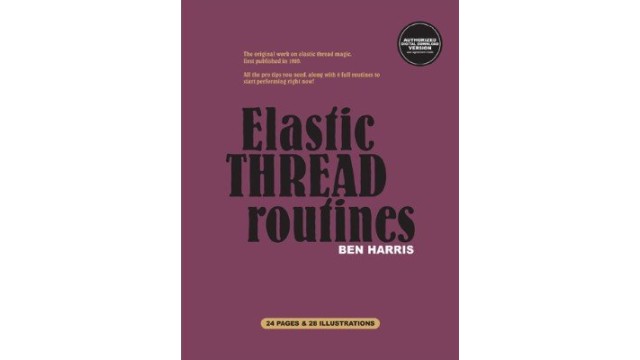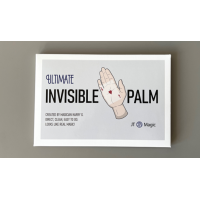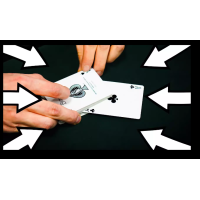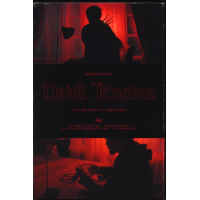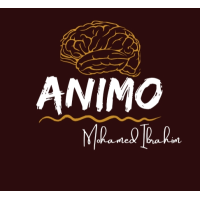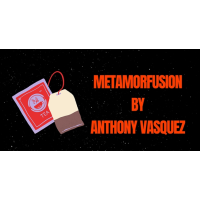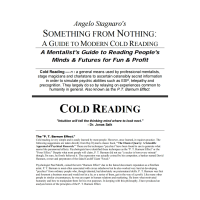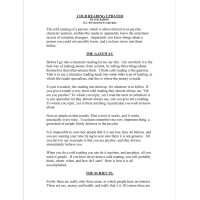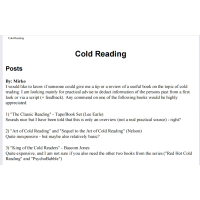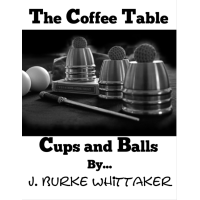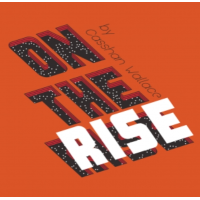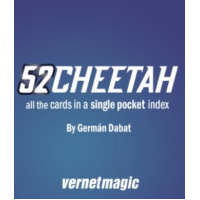Elastic Thread Routines by Ben Harris
- Product Code: B3#1330
- Reward Points: 5
- Availability: In Stock
- $10.95
-
$1.99
- Price in reward points: 199
You see so much information published about "Elastic Thread Magic" today-you'd think it all "brand new". Alas, such is not the case. If you look hard, you'll see much of today's gold is really the silver of yesteryear.
This manuscript contains original routines as well as important information that appeared in the original 1989 manuscript. Even the illustrations are the originals. Enjoy and impress...
Subjects covered:
- flashing
- controlling the ends
- camouflage
- securing elastic thread
- making a band of elastic thread
- the slider (a precursor to Zoom)
- the enchanted butterfly
- floating smoke ring
- flying pip
- floating card
- coins on the move
Michael Weber was the first magician to publish (and to establish in the written record) an elastic thread routine. His matchbox effect, utilizing the then unheard of magic-fibre, appeared in an issue of Genii Magazine. Michael credits his mother with having introduced him to the special thread.
Independently of this, (circa 1985) Finn Jon from Norway truly established the use of the thread within the magic fraternity. Finn is to be credited with the creation of a special application of elastic thread technology, ie: the Elastic Loop Elastic thread, like any thread, is a fussy medium to work with. Finn Jon's creation of the Elastic Loop is profound in its practicality and applicability - it eliminated the pesky ends.
Ben personally obtained a set of Elastic Loops when working a convention in Bordeaux, France. The year was 1986, and he was impressed. It seemed incomprehensible that a thread so fine could stretch so far. His mind filled with ideas and he continued to work on, and perform elastic thread magic throughout 1986-1989. This led to the development of the original Premier Elastic Thread (the world's first ever supply of BULK Elastic Thread, '87), and this booklet Premier Elastic Thread and Routines, ('89).
1st edition 1989; 24 pages; 28 illustrations.
word count: 3839 which is equivalent to 15 standard pages of text
Reviews (0)
Related Products
The Gypsy Thread by Wgm
The world's best Magic series break restore WGM - The Gypsy Thread their favorite routines and tec..
$0.99 $4.23
Easy To Master Thread Miracles by Michael Ammar
Michael Ammar - Easy to Master Thread Miracles (1-3) Volume One Section One - Introducing Elastic T..
$2.99 $8.99
Freak Hole by RN Magic Ideas
Feak Hole is a visual moving hole effect on a signed playing card by our member's ideas. Have yo..
$2.99 $5.99
Inksidious by Esya G
Imagine that you can produce coins from an image like a trailer!The magician has one card, and then ..
$1.99 $5.99
Elastic 2 by Nevin Sanchez
You may think sequels aren't great, but I hear that and raise you 'The Dark Knight', Shrek 2 & D..
$2.99 $5.99
Recommend
Bas**rd Hard Moves Made Easy by Ian Kendall
A perfect Faro Shuffle. Lennart Green’s “Top Shot”. Charlie Miller’s “Cascade Control”.Card sleights..
$3.00 $33.00
Implosion by Florian Sainvet
The spectator signs a card and it’s lost in the deck.You bet them a clean $100 you’ll find their car..
$4.00 $33.00
Ultimate Invisible Palm by JT & Harry G.
Ultimate Invisible Palm created by Harry G is the ultimate version of the classic ‘Invisible Pa..
$3.00 $33.00
Mentalism Bundle by AM
If you are someone who uses Mind Magic apps and are interested in presentations to improve existing ..
$0.99 $22.00
7 Ways To Make Cards Fly Out Of Deck
Today, Biz is going to show you 7 unique ways on how to make solitaire cards fly off the deck! These..
$1.66 $32.00
Devil Knows by Lewis Le Val
Lewis Le Val's Devil Knows is a complete system for providing spontaneous, unique and powerful mind ..
$1.99 $32.00
Animo by Mohamed Ibrahim (Instant Download)
Animo by Mohamed Ibrahim (Instant Download) 2 very cool principles that help you to read m..
$2.50 $22.00
Metamorfusion by Anthony Vasquez
A teabag transposition!Effortlessly make tea packets changes place with this awesome gimmick you can..
$1.99 $23.00
Angelo Stagnaro's Something From Nothing - A Guide To Modern Cold Reading
Cold Reading - n : a general means used by professional mentalists,stage magicians and charlatans to..
$0.00
Advanced Cold Reading
The cold reading of a person, which is often referred to as psychic character analysis, enables..
$0.00
Cold Reading - Discussion and Review
Posts By: Mirko I would like to know if someone could give me a tip or a review of a useful book o..
$0.00
PSI-Roller by Michael Breggar
Michael Breggar (the creator of best sellers ART ATTACK and BAD BIKES) strikes again with the baffli..
$2.99 $33.00
The Coffee Table Cups and Balls by J. Burke Whittaker
One of my pet routines that I used in intimate but casual performances. This takes advantage of a mi..
$2.99 $45.00
Cups and balls by smayfer (Instant Download)
Cups and balls by smayfer (Instant Download)Get ready! to embark on a journey through one of th..
$3.99 $43.00
On the Rise by Casshan Wallace (Gimmick Not Included)
"I was there in the audience and it was by far my favorite addition to Ambitious card" - M..
$1.99 $54.00
German Dabat & Vernet Magic - 52CHEETAH (English with subtitles in Spanish)
52 Cheetah By Germán Dabat All the cards in a single-pocket index In 2022, we introdu..
$1.98 $43.00

